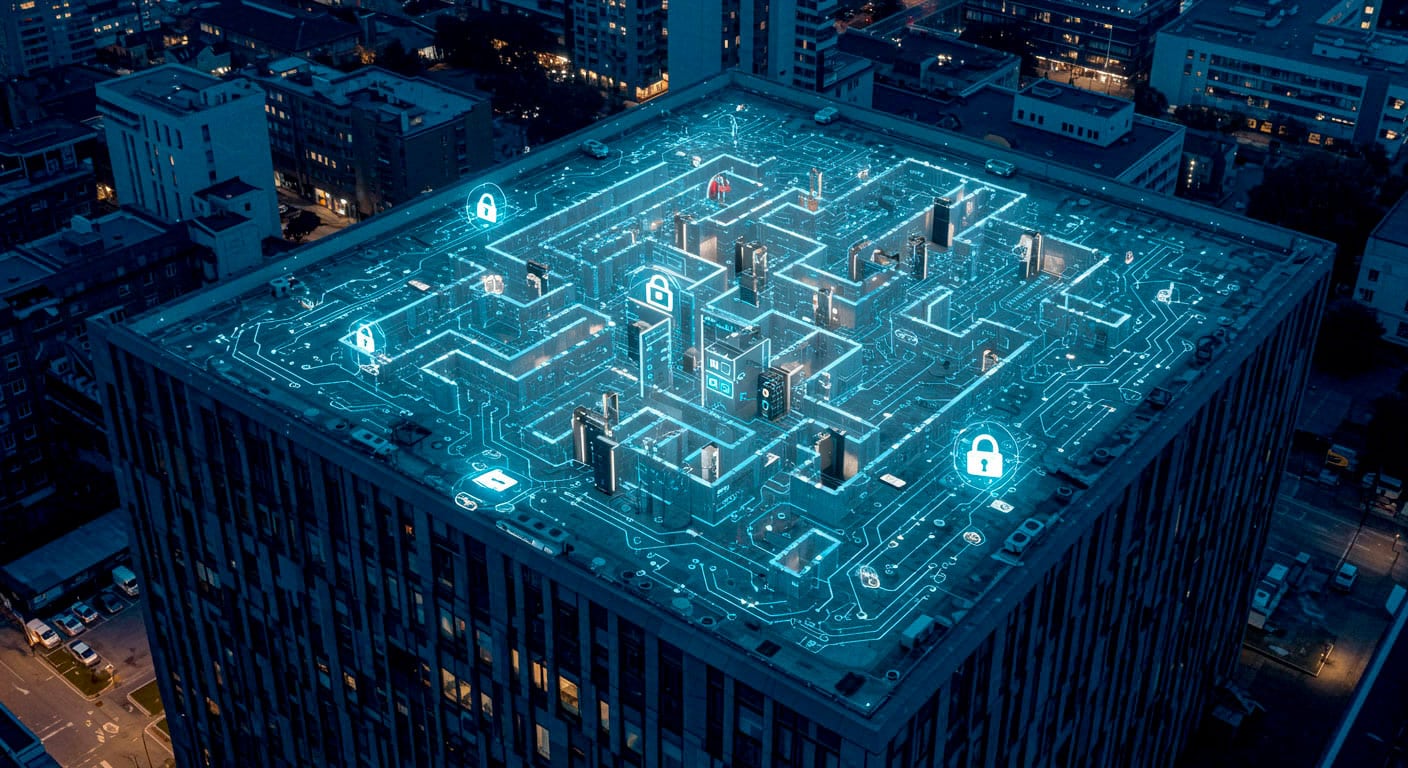The 3-step operating model
Phase 1 – 0-4 hours: securing and stabilizing
Goal: protect people and assets, contain the event, preserve evidence.
Key Actions
- People & site safety: evacuation or confinement; HSE triage; physical perimeter and checkpoints.
- Command & control: activate the Crisis Cell (Security lead, HSE, IT/OT, HR, Legal, Operations). Appointment of Incident Commander and substitutes.
- Evidence & logs: block overwriting DVR/NVR; forensic copy of relevant video segments; temporary seizure badge/access log; time-stamped event log.
- Flash (internal) communication: short message to all staff on status, instructions, and official channels; designate a single spokesperson.
- Authority: assess activation Law Enforcement/VVF/118; inform insurance according to policy.
Output phase 1
- Event stabilized, perimeter under control, first evidence sealed, chain of custody initiated, internal memo circulated.
Phase 2 – 4-24 hours: contain, assess impact, plan restoration
Goal: To understand what happened, how much it affected, what functions are critical.
Key Actions
-
Structured assessment:
- Damage to people/assets/plants; impairment of production lines and services.
- Verify gates, routes, sensors, intrusion detection systems, and access controls.
- Correlation with IT/OT: badge vs login, network anomalies, possible physical-cyber correlation.
- Business impact: identify priority processes (“A” list) and supply chain dependencies.
- 24h plan: choose options for containment and rapid restoration (alternate site, special shifts, escorts).
- Targeted communication: inform management, area leaders, and critical customers with verified facts and restoration horizon.
- Contracting & insurance: open claims, verify SLA clauses with vendors, document out-of-pocket expenses.
Output phase 2
- Initial report (“Situation Report”) with probable causes, impacts, decided actions, residual risks, estimated time.
Phase 3 – 24-72 hours: restore, communicate, prepare post-incident
Goal: To return to service in a controlled manner and set the path for improvement.
Key Actions
- Controlled recovery: phased reopening, hardening of critical gates, functional testing (access, video, alarms).
- Workforce: temporary reassignments, mandatory briefing on new procedures; HR support if event involves staff.
- Public & stakeholder comms: consistent messages to customers, partners, media, and insurers; unified Q&A.
- After Action Review (AAR): within 72h collect timeline, decisions, problems, lessons learned; define remediation and owner.
- Governance: update crisis plans, training and contracts (SLAs/penalties) based on findings.
Output phase 3
- Service restored with audits, remediation plan, closed communications, audit materials and assurance.
Ready-to-use checklist (to be kept in the crisis room)
Crisis Cell – minimal roles
- Incident Commander (Security) – operational decisions and priorities.
- HSE – safety people/plants
- IT/OT – data integration, event correlation
- HR – workforce, internal communications, support
- Legal/Privacy – compliance, assurance, chain of custody
- Operations – production continuity/supply chain
- Media/Comms – messages to stakeholders
Evidence & logs
- Copy video segments and badge access
- Georeferenced photos of damage (timestamps)
- Record decisions (who, what, when, why)
- Storage of objects/evidence in labeled containers
Critical contacts
- Law Enforcement / Fire Department / 118 / Municipality
- Insurance (claims, adjusters)
- Vital providers (energy, security, maintenance)
- “A” customers and logistics partners
Essential crisis kit
- Floor plans, crossing lists, useful numbers
- Emergency credentials, sealed master keys
- Flashlights, portable UPS, radios or satellite phones.
- Pre-filled forms (incident report, damage inventory)
Incident types and specific moves
Intrusion/theft
Blocking gates and escape routes; geofence reconstructed from video + badges; rapid inventory; coordination with Law Enforcement; increased temporary garrison.
Fire/smoke
Post-event: air/plant testing; hot area interdiction; checking cable runs and compartmentalization; sensor realignment (reduce false alarms post-recovery).
Internal sabotage
“Need-to-know” teams; segregation of functions; HR/Legal comparison; log mirror to avoid contamination; temporary suspension of at-risk credentials.
Prolonged blackout
Prioritization of essential loads; control of restarting systems (overcurrents); enhanced physical surveillance on gates and valuable areas.
Climatic event
Mobile barriers, pumps, perimeter protection; restoration by cluster of dry areas; alternate routes for goods and personnel.
Physical + cyber event
Joint war-room; timeline correlation; network/area emergency segmentation; integrated customer and authority communication.
Mistakes to avoid
- Excessive waiting to “get all the information”: better iterative decisions with partial data.
- Inconsistent messages between HR, Operations, and Legal.
- Underestimating insider threat in early assumptions.
- Do not preserve video/badge logs in the first few minutes.
- Delegating to too many vendors without single coordination: lengthens time and increases friction. Here a single point of contact and purchasing center simplifies and creates economies of scale.
KPIs to measure 72-hour management
- MTTA / MTTR crisis (activation time / recovery time)
- % “A” processes safeguarded within 24/48/72h
- Chain of custody integrity (positive audit)
- Pre/post intervention false alarm rate
- SLA of garrison/technology during the event (>96% target)
- Losses avoided vs baseline (ALE), insurance claims recognized
What an effective partner should look like
An effective partner brings in dowry:
- End-to-end value chain (risk analysis, design, technology, presidium, auditing) and single point of contact for execution and reporting.
- Network independent of supervisory institutions (“super partes” site-by-site choice, avoid lock-in).
- Dedicated coordinators with small teams, continuous inspections and monitoring, high SLAs and measurable efficiency recovery.
Conclusion
A crisis is not “improvised”: it is governed by clear procedures, known roles, preserved evidence, unambiguous communications, and a partner who shortens the time. The first 72 hours is when physical security proves to be an investment: people protection, process continuity, business value preserved.



